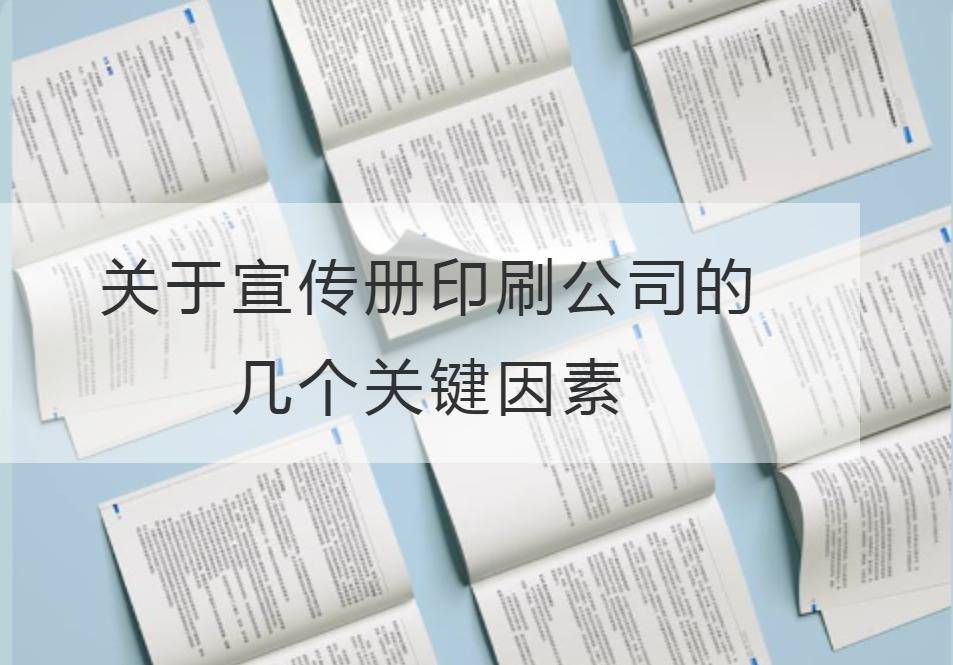Key Factors About Brochure Printing Companies
In today's information age, brochures are very important for the promotion of enterprises and brands. A professional printing company plays an integral role in creating a successful brochure. This article will help you decode the success of a brochure printing company based on several key factors.
The night is endlessly painful, and the moon finally shines.
This ancient poem more or less outlines the hardships of struggle, but only the wisdom and skill honed in the dark can add soul and life to the printing process of the brochure.

Technology and equipment: Focusing on Technology and Pursuing Excellence
Brochure printing requires professional technical support, and a good printing company must be ahead of the curve in terms of technology and equipment configuration. Advanced printing technology ensures color reproduction and clarity, and superior equipment provides a solid guarantee for high-quality printing.
Selection of raw materials: Excellent quality, perfect work
Different brochures require different paper materials, and printing companies must pay attention to quality when choosing raw materials. High-quality paper creates better printing results, both glossy and tactile. Only the pursuit of perfection, can let the brochure in touch more texture, let the eyes meet the instant exude unique charm.
Design and creativity: Arouse empathy, trigger empathy
Excellent brochures are designed and creative. The printing company should have a team with a professional design background that can integrate brand ideas and promotional messages into the brochure according to the customer's needs so that the reader can feel the value and charm of the product or brand. Not only that, ingenious and original design can also set up a unique image for the enterprise, win the hearts of the vast number of potential customers.
Service and cooperation: Mutual benefit and win-win achievement
Creating a successful brochure can't rely solely on the efforts of the printing company, the customer also needs to participate actively and cooperate. Excellent printing company should take practical and efficient service as the cornerstone, and establish close cooperation with customers. Only through the close cooperation of both parties, can we truly achieve the advantages of customer demand and printing company's ability to complement each other, so as to achieve the goal of mutual benefit and win-win development.
With advanced technology, high quality raw materials, exquisite design and efficient service, the printing company achieves the irreplaceable value of the brochure. The charm of the brochure will illuminate the way forward for the development of the enterprise and the brand. So if you're looking for a printing company to produce a brochure, consider these key factors and choose one that will bring you success.Brochure Printing Company. In the upcoming brochure, let's work together to write a successful chapter!
Recommended Reading:



